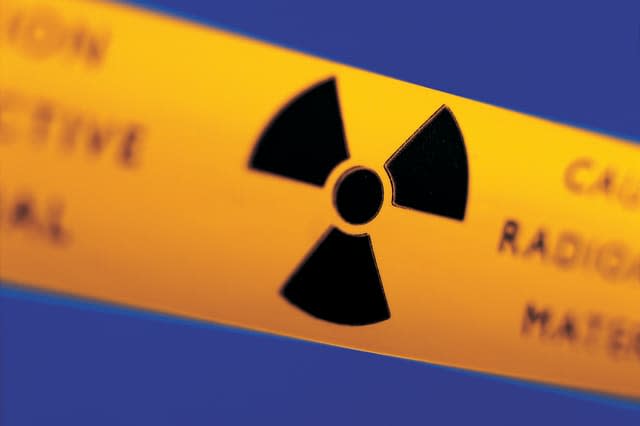The most radioactive places on earth

Thanks to nuclear power and atomic weaponry, there are some locations on this planet that are home to face-melting quantities of radiation. Here is a list of some of the most contaminated, worrying spots around.
10. Mayak, Russia
During the build up to the Cold War the USSR constructed a number of nuclear plants, including the Mayak Plant which was hastily completed between 1945 and 1948. The plant sidestepped safety regulations and dumped its highly radioactive waste into the nearby Lake Karachay. The waters are now so toxic they could kill a human in less than an hour. The city also saw one of the world's worst nuclear tragedies in 1957 - The Kyshtym Disaster. An explosion ripped through the plant and released deadly radiation. The disaster was kept quiet until the 1980s.
9. Sellafield, UK
Built in the late 1940s to manufacture plutonium for atomic bombs, Sellafield is one of the most radioactive places on earth. In its prime the plant was releasing eight million litres of contaminated waste into the sea every day. In 1957 the plant became the site of the worst nuclear accident in Great Britain's history, The Windscale Fire. This was a blaze that raged for three days, releasing radioactive gases into the air. It has been linked to 240 cases of cancer.
8. Goias, Brazil
In September 1987 two men broke into an abandoned hospital to steal what they thought was scrap metal - it actually turned out to be a cancer therapy device containing a lethal radioactive substance. The thief invited his friends and family to see the object which was glowing blue but those who handled it became ill. Authorities stepped in to dispose of the metal but by that time a large area of land had already been contaminated.
7. The Somali Coast
During the 1980s numerous Swiss and Italian companies took advantage of lax Somali regulations and secretly dumped hazardous waste on the coast. An Italian crime syndicate sank at least 30 ships loaded with waste off the shores of Somalia. Locals are still feeling the affects of their crimes today with birth defects and cancer common in the area.
6. Mailuu-Suu, Kyrgyzstan
This radiation doesn't originate from nuclear bombs or power plants but from mining. The area is a uranium mining facility- meaning it has accumulated large amounts of waste over the years. The region is also a hotspot for seismic activity, which doesn't help the situation.
5. Siberian Chemical Combine, Russia
Deep in the heart of the Russian province lies a chemical storage facility containing over four decades worth of nuclear waste. The site was once a plutonium and uranium production complex before it became a storage site for radioactive materials. Sitting in uncovered pools are thousands of liters of liquid waste and 113 million kg of solid waste are stored in leaking containers.
4. Hanford, USA
The site was a nuclear production complex built in 1943 as part of the Manhattan Project. In the decades that followed the Hanford Site saw the production of plutonium for the majority of America's 60,000 nuclear weapons. Although it has since been decommissioned, the area is still home to a huge amount of nuclear waste - it will take decades to decontaminate.
3. The Polygon, Kazakhstan
The Polygon in modern day Kazakhstan was the Soviet Union's primary location for testing its nuclear weapons during the Cold War. It was specifically for this purpose because the government deemed it to be uninhabited. However a staggering 700,000 people actually live in the area. Scientists today estimate that over 200,000 people have health conditions resulting from the area's radiation.
2. Chernobyl, Ukraine
The infamous nuclear disaster at the Chernobyl Nuclear Power Plant in April 1986 cost an estimated $18 billion and exposed over six million people to dangerous levels of radiation. The disaster released more than 400 times the amount of radioactive material that the bombing of Hiroshima did. It's estimated that 93,000 deaths could be attributed to its long term effects on people's health.
1. Fukushima, Japan
In March 2011 a huge earthquake triggered a tsunami on the east coast of Japan which flooded the Fukushima Nuclear Plant, sending it into meltdown. Multiple reactors were destroyed at once. This led to uncontrollable fires, as well as the release of radioactive steam and hundreds of thousands of litres of contaminated water.




